Thung Nham is located in Hai Nham hill valley - Hai Nham village - Ninh Hai commune - Hoa Lu district - Ninh Binh province, about 15km from Trang An eco-tourism area, is one of the tourist attractions in the core area of Trang An world heritage complex.
This place has a very fresh climate and charming scenery, green mountains and blue water. With a natural flooded forest ecosystem of about 334.2 hectares, of which 19 hectares are primeval forest, Thung Nham bird garden is home to about 46 species of birds, 109 species of plants, 150 species of animals... famous for being the habitat of many species of birds such as storks, herons, teals, starlings, teals... and two rare birds, flamingos and phoenixes, listed in the Red Book. For many years, Thung Nham bird garden has been famous because it is the largest natural bird sanctuary in the North.
X
Video of Thung Nham Bird Garden - Where nature calls.
In addition to being known as the land of birds in Ninh Binh, an attractive eco- tourism destination, Thung Nham is also known for its works of extremely unique cultural, historical and religious values.
Located in the campus of Thung Nham Eco-tourism Area, there is a famous sacred spiritual area including: Goi Dai Temple, Linh Than Temple and the "moving" Banyan Tree that is still passed down and worshiped by local people to this day.
This spiritual area is located in the center of Thung Nham eco-tourism area. It is a place with beautiful location and favorable feng shui. This area is located in the position of "leaning on the mountain and looking at the river" - behind is the majestic mountain range of Hoa Lu primeval forest, in front is the calm jade green Tien lake. The entire hill is like a blooming lotus, standing out in the middle of the valley. Therefore, this area is considered the land of the gods, a sacred, pure place, where gods reside.
Here, people combine the worship of Mother Goddess with the worship of Quy Minh god. Besides, they also worship Duc Thanh Viet Vuong - a talented general under the Dinh dynasty. Over many decades, this spiritual site has become an important place for cultural and religious activities in the spiritual life of Nham villagers.
Located at the highest point near the top of the hill is the Goi Dai Temple. The name Goi Dai is a combination of “goi” – meaning “continued pillow” and “dai” in “dynasty”, meaning the continuity from one era to another. It can be seen that the name of the temple represents the wishes of the ancients: the wish for the country to be independent forever, peaceful and prosperous.
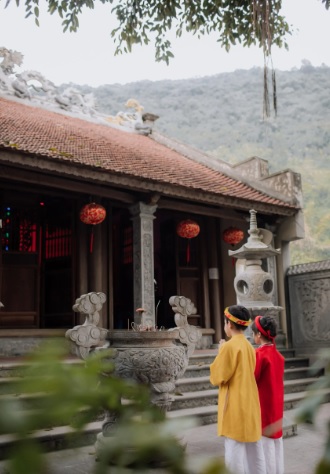
Goi Dai Temple is located at the highest position near the top of the hill - Photo: Thung Nham Eco-tourism Area
The current temple was rebuilt on the foundation of the old temple, following the architectural style of the letter T. In front of the temple, there is a stone gate in the shape of a scroll, carved with a coiled dragon motif, and two screens carved with a tiger statue. This is a popular architectural style of Vietnamese temples, creating a space of solemn and peaceful worship, and also a place for rustic and close-knit community cultural activities.
The sanctuary of the temple worships the Three Holy Mothers, including: the First Mother of the Heavens (ruling the sky) placed in the middle wearing a red uniform, the Second Mother of the Mountains (ruling the forest area) wearing a blue uniform on the right, and the Third Mother of the Waters (ruling the river area) wearing a white uniform on the left.
The outer part of the temple worships the Five Immortals and the Three Kings. The right wing worships the Holy Viet King, the left wing worships the Lady of the Temple (the one who manages the sacred temple). In addition, on the right side of the temple is the “Son Trang Cave” worshiping the Lady of Son Trang and the 12 holy ladies.
The temple's special feature lies in the diverse combination of many cultural beliefs: from Mother worship to God worship. Legend has it that the temple is very sacred. On holidays or the 4th and 15th of every month, local people often come here to offer incense, flowers, fruits and cakes. Everyone respectfully clasps their hands and bows their heads to ask Mother Mother to caress, protect, and guide them; pray for the villagers' business to be smooth, and for their families to be safe and healthy.
At the temple, worship objects such as stone lamps, incense burners, and column bases are all sculptures of the Ninh Van stone craft village - Ninh Binh.
Next is Linh Than Temple - the sacred temple that tells the story of the General. Legend has it that Duc Thanh Viet Vuong was one of the meritorious subjects who assisted King Dinh Bo Linh in suppressing the rebellion of 12 warlords and unifying the country of Dai Co Viet. In 968, after the king ascended the throne, the heroic general volunteered to return to this land to guard the western gate of Hoa Lu citadel and lived in seclusion here until his death. When he passed away, the king built a temple right under the Banyan tree to express his condolences and remind future generations to remember his contributions. Speaking of the heroic Dinh Bo Linh era, ancient history books also recorded the legend of the Tuong mountain range in the Trang An range.
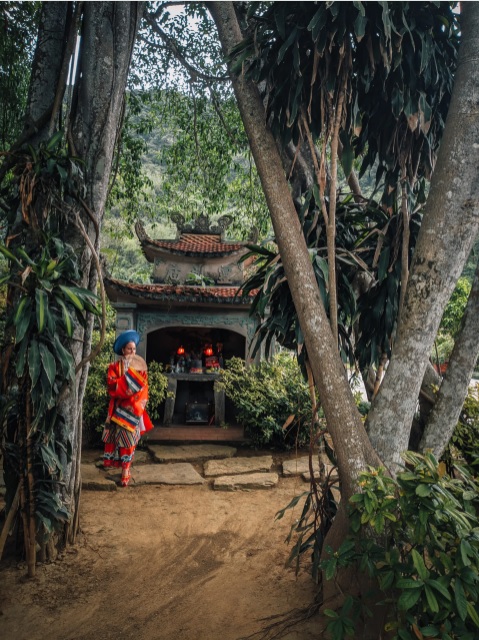
Linh Than Temple – The sacred temple tells the story of the General. Photo: Thung Nham Eco-tourism Area
At that time, this mountain range was considered a watchtower protecting the west of Hoa Lu citadel. In 966, Dai Viet fell into the chaos of the 12 warlords. Dinh Bo Linh raised the flag of uprising, fought in the East and North, and won consecutive victories. He was honored by the people as Van Thang Dai Vuong. Legend has it that after great victories, Dinh Bo Linh and his generals went to the top of Tuong mountain to hold a party for the troops, celebrate and sing songs of victory all night long. The name "Tuong mountain" also came from that.
Later, when Duc Thanh Viet Vuong passed away and a temple was built, the temple also faced the top of Tuong mountain as the wish of the talented general of the past to always remember the glorious period as well as his loyalty and patriotism to live forever. The temple today has historical value as it still preserves many precious antiques.
The recorded artifacts include: 5 green stone slabs forming an altar and 2 incense bowls (1 round cylinder, 1 rectangular) made of smooth green stone with the main pattern of "two dragons worshipping the moon". According to research, these two incense bowls date back to the Later Le Dynasty (around the 16th century). The spirit of the temple has always been worshiped and cared for by the local people, the incense has never cooled down. Just like the hearts of the people here always remember the merits of the talented general of the past.
Standing tall in the middle of Thung Nham forest, spreading its green shade over Goi Dai Temple and Linh Than Temple is a thousand-year-old banyan tree. According to science, when the banyan tree reaches 300-330 years old, it will start to change its trunk. The main trunk of the tree will get old and rot, and instead, the secondary roots will cling to the ground and develop into a new trunk. This process is called migration.
Scientists have researched that the Banyan tree in Thung Nham is over 1000 years old and has undergone three moves. The tree is currently at the end of the third and the beginning of the fourth. The tree's original location is 20 meters away from its current location.
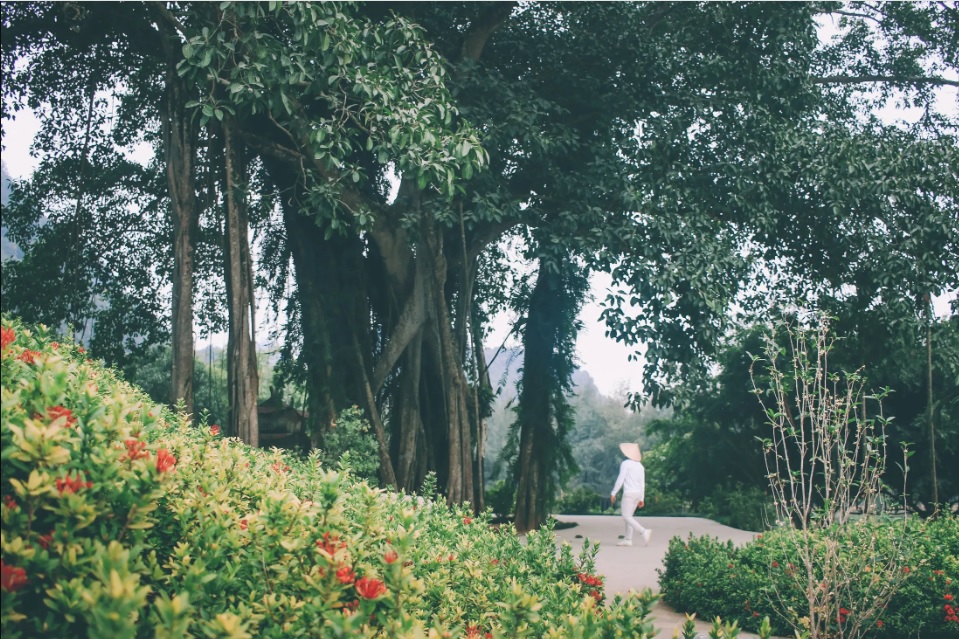
The moving banyan tree – Standing tall for a thousand years. Photo: Thung Nham Eco-tourism Area
This is also the reason why the tree is called “Moving Banyan Tree”. The special thing is that: according to the natural law, trees always move towards the water source. However, this Banyan tree does not move towards the Tien Lake wharf but moves in the opposite direction: around Linh Than Temple and Goi Dai Temple. The tree’s roots intertwine to form a green screen to protect the buildings behind from storms, wind, and toxic gases.
This strange and interesting thing has been associated by the people here with the loyalty of Duc Thang Viet Vuong - a talented and virtuous general who wholeheartedly supported King Dinh. For many decades, through many storms, the ancient banyan tree still stands majestically, in the summer it spreads its green canopy to provide shade, in the winter it becomes a screen to protect. When moving the banyan tree, it only moves around the temple. The image of the banyan tree and the temple always goes together, both solid and intimate. It seems that the relationship between the king and the emperor still lives here.
Source



































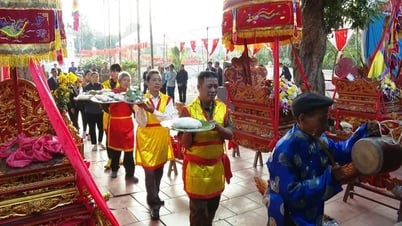
![[Photo] The 1st Congress of Phu Tho Provincial Party Committee, term 2025-2030](https://vphoto.vietnam.vn/thumb/1200x675/vietnam/resource/IMAGE/2025/9/30/1507da06216649bba8a1ce6251816820)
![[Photo] President Luong Cuong receives President of the Cuban National Assembly Esteban Lazo Hernandez](https://vphoto.vietnam.vn/thumb/1200x675/vietnam/resource/IMAGE/2025/9/30/4d38932911c24f6ea1936252bd5427fa)
![[Photo] Solemn opening of the 12th Military Party Congress for the 2025-2030 term](https://vphoto.vietnam.vn/thumb/1200x675/vietnam/resource/IMAGE/2025/9/30/2cd383b3130d41a1a4b5ace0d5eb989d)

![[Photo] Panorama of the cable-stayed bridge, the final bottleneck of the Ben Luc-Long Thanh expressway](https://vphoto.vietnam.vn/thumb/1200x675/vietnam/resource/IMAGE/2025/9/30/391fdf21025541d6b2f092e49a17243f)


















































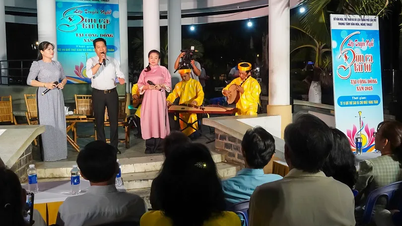













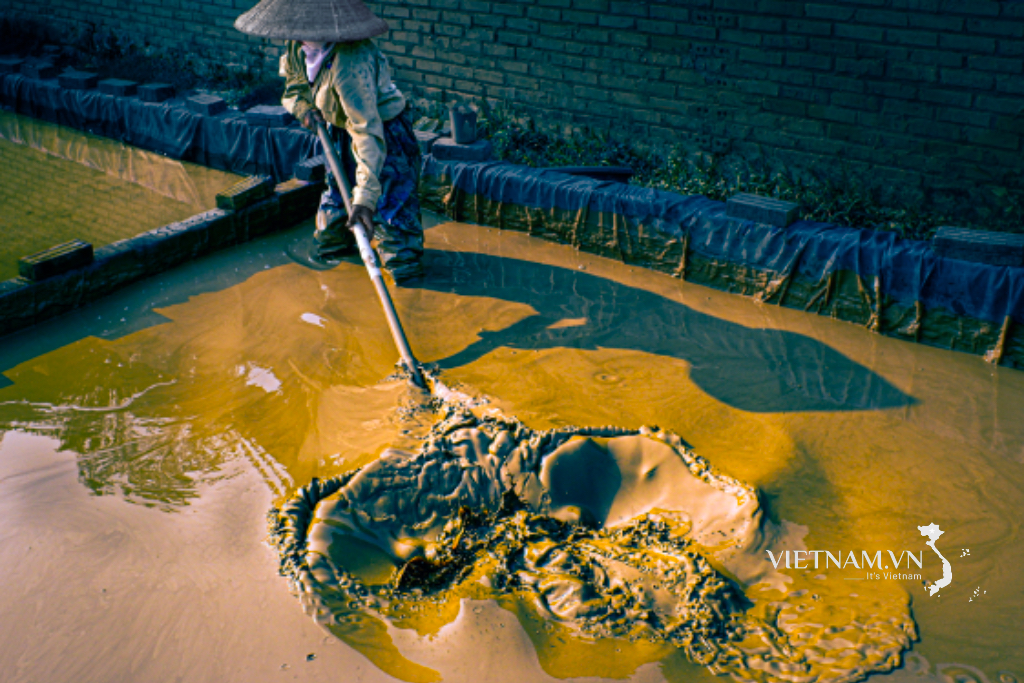


Comment (0)